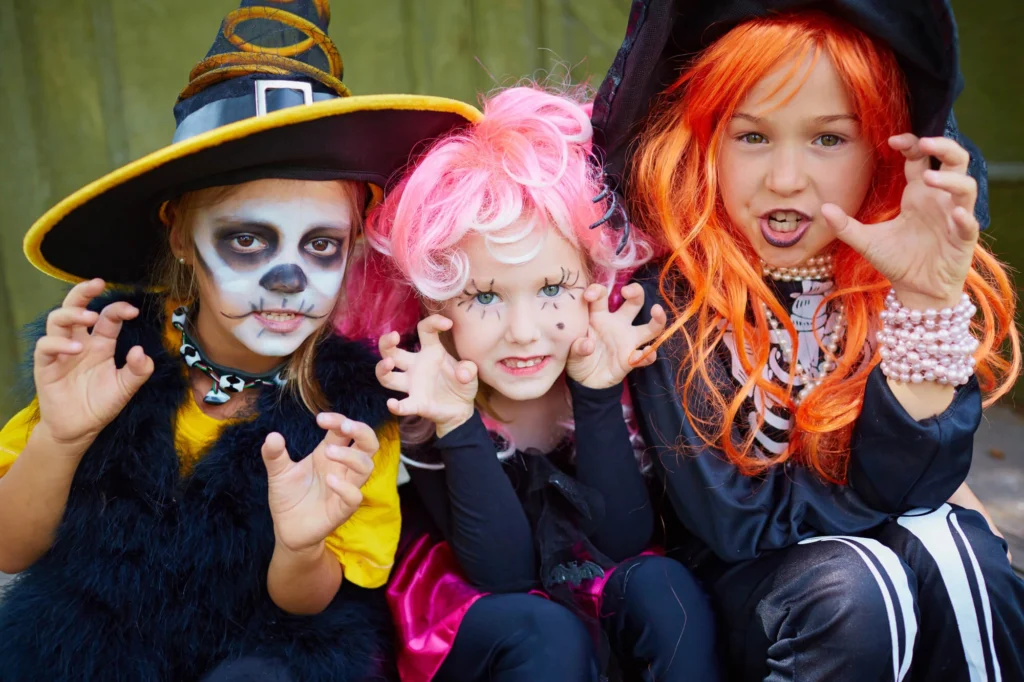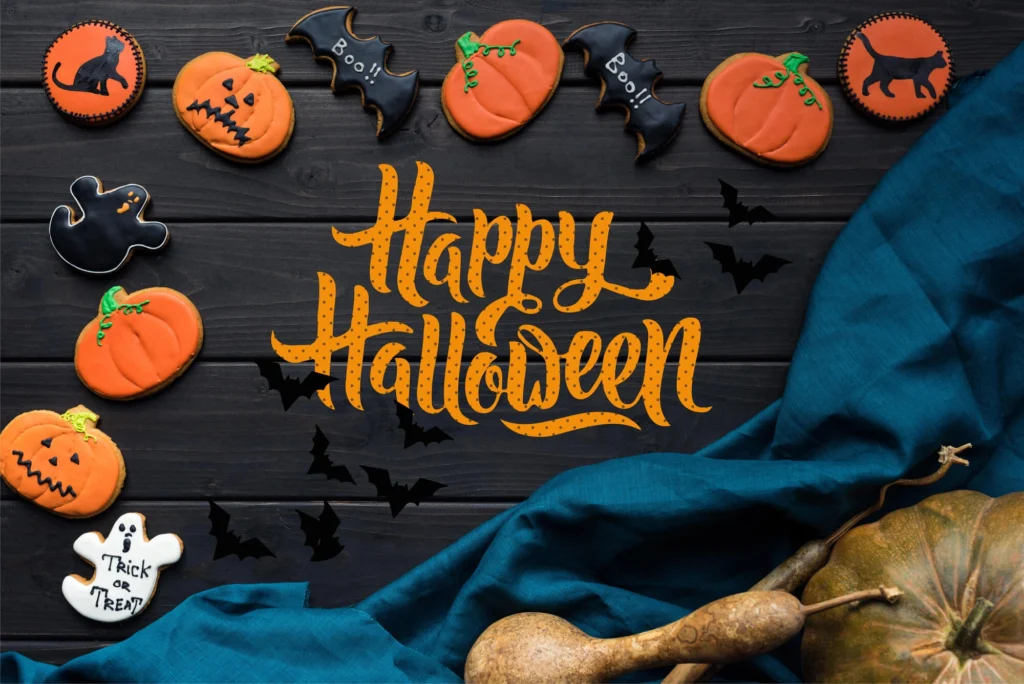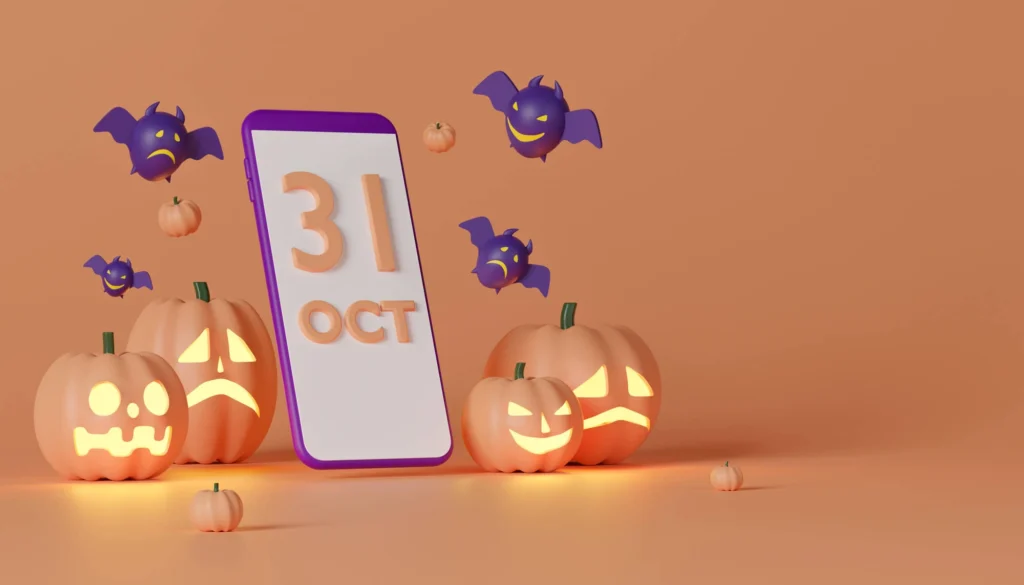You know the signs: pumpkins showing up in August, skeletons casually lounging in front yards by Labor Day, and grocery aisles overrun with 17 varieties of candy corn.
Halloween has officially outgrown its one-night status and mutated into a full-blown season tied closely to fall traditions, nostalgia, and retail momentum. Today, it’s a cultural moment that brands across industries are finding creative ways to join.
From costumes and candy to home décor, cocktails, and events, the window for seasonal campaigns is broader than ever. But as the season starts earlier and competition intensifies, running a Halloween campaign that’s both strategic and timely can be challenging.
With the right tools like programmatic campaign optimization and a clear message, brands can reach motivated audiences early, tailor creative to specific categories or demographics, and stay relevant through the entire season.
Whether you’re promoting products, services, or full Halloween experiences, there’s plenty of inspiration—and opportunity—to work with.

Halloween by the Numbers: The Season of Spending
Halloween is about ghosts, ghouls—and $11.6 billion in consumer spending. According to the National Retail Federation, in 2024, the average shopper spent $103.63, which can easily cover a costume, a few bags of candy, and perhaps a last-minute impulse buy like glow-in-the-dark lawn décor.
But the real story is in the shift behind that number. Halloween shopping habits are changing, and the audience is expanding well beyond trick-or-treaters.
Here’s a closer look at what’s driving the surge and how smart brands are tapping into it:
Shoppers Are Getting a Head Start
Halloween prep isn’t waiting for October anymore. NRF findings show that 47% of consumers started shopping before the month even began in 2024. That’s a significant jump from 32% ten years ago, and it shows how closely Halloween has become tied to broader fall excitement.
Leading the way are 25- to 34-year-olds, a group that includes both millennial and elder Gen Z shoppers. 56% of them planned to shop early, and 86% celebrated Halloween in some way.
They’re also spending more than the average, with $124.43 per person going toward costumes, décor, food, and more.
For brands, this group represents a highly engaged audience that responds well to seasonal messaging, especially when it’s timely and visually strong.
What They’re Buying
While candy remains a seasonal staple, Numerator surveys conclude that today’s Halloween carts reflect a much wider range of purchases:
- 75% of celebrators buy candy
- 36% shop for food and party supplies
- 18% purchase alcohol
- 9% plan to give gifts
And then there’s décor. Spending on Halloween decorations has jumped 42% since 2019, rising from $2.6 billion to $3.8 billion in just five years. Consumers are investing in the full experience: dressing up their homes with figures, themed lighting, front-lawn displays, and everything in between.
The data points to a clear trend: Halloween is now treated as a seasonal moment worth planning for, with people eager to engage—and spend—across multiple categories.
For advertisers, that means a broader range of campaign angles, from home goods and food to alcohol, entertainment, and beyond.
How to Build a Programmatic Campaign That Performs During Halloween
Once you understand how early and enthusiastically consumers are shopping for Halloween, the next step is building a campaign that meets them there without blending into the seasonal noise.
Programmatic advertising offers the precision and flexibility needed to reach motivated audiences with content that feels relevant and easy to act on.
Keep It Seasonal, but Stay Grounded in Your Brand
There’s plenty of room for themed content in October, but not every brand needs to go full horror movie. Seasonal references should enhance your message, not overpower it.
If your product naturally fits into Halloween plans, highlight it. If not, focus on the autumn mindset or broader cultural trends tied to the season.
For example, a clothing brand might lean into cooler weather and cozy colors rather than costumes. A snack company could reference party planning or Halloween movie marathons instead of haunted houses. The key is to find a tone and a theme that match your audience’s mood without forcing it.
Use A/B testing to explore visual direction, headline tone, or promotional offers tied to the season. Then adjust based on what’s working best.
Launch Earlier Than You Think You Should
Consumers are shopping early, and that means campaigns should start earlier too. Brands waiting until October are likely to miss the first wave of intent, especially among younger audiences who build excitement weeks in advance.
Consider launching in late August or early September to give your message time to build momentum. By the time October hits, you’ll have already reached engaged audiences and you’ll be able to re-engage them later with reminders or limited-time offers.
Create a Halloween-Themed Landing Experience
Your ads might get the click, but the landing page does the heavy lifting. A generic homepage isn’t going to hold attention, especially when a seasonal message was what drew someone in to begin with.
Build a dedicated Halloween landing page that keeps the theme consistent and guides users toward a clear action. This could mean showcasing a seasonal product bundle, running a countdown to a limited-time drop, or offering early access to holiday promotions.
A clean, mobile-friendly layout and quick load times will keep visitors from bouncing before they’ve had a chance to engage.

Use Geotargeting to Deliver Local Relevance
Location-based targeting is especially useful during seasonal campaigns. Whether you’re promoting a local event, retail experience, or product available in specific stores, geotargeting helps you adapt messaging based on where your audience is.
For instance, an alcohol brand might promote a Halloween-themed cocktail night at bars within a 10-mile radius. A costume retailer could push ads to shoppers near participating stores with same-day pickup. A haunted attraction could focus ad spend within driving distance of the venue.
Relevance is critical, and local targeting helps your campaign feel more personal and timely.
Promote Limited-Time Events or Product Drops
Time-sensitive promotions are well suited to the Halloween season. Whether you’re launching a new product, hosting an in-person event, or opening a temporary experience, programmatic campaigns can help build anticipation and drive participation.
Use countdowns, early-access teasers, or rotating creatives that shift as the calendar gets closer to your event or drop date. By focusing on urgency and exclusivity, you can keep your campaign dynamic and top of mind.
Sync Campaigns Across Channels
Programmatic works best when it complements the rest of your marketing mix. Coordinate your seasonal strategy with email, SMS, social, and any in-store messaging to create a consistent experience.
If someone clicks a programmatic ad for Halloween décor, make sure your website and emails reflect that same category and offer. If a customer signs up for early access through your site, follow up with personalized remarketing that reinforces the value.
When everything works together, your message becomes more cohesive and memorable.
Five Strong Halloween Campaigns That Got It Right
If you’re looking for inspiration, these brands went beyond surface-level Halloween references and delivered well-timed campaigns with thoughtful creative and clear connections to their products.
1. Bacardi: Terrifyingly Good
Bacardi launched a Halloween campaign featuring glow-in-the-dark bottles and short cocktail tutorials inspired by classic horror films. The effort extended across channels, including themed Snap filters and a curated Spotify playlist. The creative stayed on brand while tapping into seasonal behaviors like party planning and themed drinks.
Lesson: Build a campaign that connects naturally to how people already use your product during the season.
2. IKEA: Monsters Not Included
IKEA’s campaign focused on childhood fears: monsters hiding under beds, behind curtains, or in closets. Rather than leaning into fear, it used light humor and emotion to promote practical solutions like nightlights. The messaging was clear, accessible, and relatable.
Lesson: A simple idea can have a strong impact when it taps into familiar emotions and fits your product offering.
3. Heinz: Tomato Blood
Heinz rebranded its ketchup as “Tomato Blood” and supported the effort with costume kits, a pop-up store, and a user-generated content push on social media. It offered a fun, low-lift way to participate in Halloween without changing the product itself.
Lesson: Seasonal campaigns don’t always require new products. Reframing something familiar can work just as well.
4. Booking.com: Haunted Hotels
Booking.com used horror movie visuals to promote real stays at reportedly haunted hotels. The ad followed a guest experiencing unexplained events, turning the hotel stay into a suspenseful narrative. The concept added personality while staying tied to the brand’s core service.
Lesson: Use storytelling to bring your product to life, more so when it naturally fits the tone of the season.
5. Burger King: Scary Clown Night
Burger King offered free Whoppers to anyone dressed as a clown, timing the campaign alongside the release of It and playing off fast food rivalries. The offer generated strong engagement both in-store and on social media.
Lesson: Timing matters. A simple, relevant idea tied to pop culture can lead to strong participation and attention.

Make This Halloween Count with Smart Programmatic Campaign Optimization
KPAI helps brands build smarter, AI-powered programmatic campaigns that respond to real consumer behavior: seasonal shifts, early-bird shoppers, local trends, and everything in between.
From geotargeting to creative testing, our tools are designed to help you launch Halloween campaigns that feel intentional, not improvised.
Let’s build your Halloween campaign to match how your audience thinks, shops, and scrolls. Contact KPAI today to book a meeting and get started!



